The level of education is currently immeasurably higher than that which was 100 years ago. The demands on the individual from society are increasing. This is due to the need to create and apply high technology, as well as knowledge of the laws of development of society. And if at the beginning of the last century, incomplete secondary education (as evidenced by the biographies of the Soviet leaders of that time) was enough to govern the state, and no one required a document on education, then today the emphasis is on intelligence. And he, as you know, is not distributed as a gift, but implies a systematic work aimed at self-improvement.
The first steps
We begin to learn the world from the first moment of our life. These are still unconscious impulses, but time is passing, and we are moving along with it. The first words have already been said, the first independent steps have been taken. And the time has come when we are changing the environment: instead of the familiar faces of relatives and friends, we see many strangers. This means that our parents brought us to a kindergarten or kindergarten.
And there, for the first time, they begin to engage in our education using a specific system. But since we are in the country of childhood, it doesn’t even occur to us that the teacher Mary Ivanovna, dancing with us or playing some game, follows the State educational standard of preschool education. Moreover, even our parents only heard about this document, but did not read it. Fill this gap.
The same Standard
January 1, 2014 in the Russian Federation has come not only a new year. In the country, the Federal State Educational Standard for Preschool Education came into effect, or in short - GEF DO. It should be noted that this document was not created on its own: it supplements and broadens the understanding of the Federal Law adopted earlier in 2013 in September, referred to as the "Law on Education in the Russian Federation".
The Standard provides all that is necessary for the upbringing and development of the child. This is one of the main regulatory documents in education. Therefore, its main provisions and principles must be addressed in more detail.
Standard Provisions and Principles
The cornerstone of the new Standard is child development. It is assumed that the stimulating development of the child will be the surrounding social environment that is present in the preschool institution. Moreover, this is not only a children's team, but also the entire DOE staff, interacting with which a boy or girl forms new behaviors. This is also called "socialization."
For those who are far from the intricacies of preschool education and have not delved into the meaning of normative documents in education, we explain that until January 1, 2014, the upbringing of children in preschool education was built taking into account the expansion of their knowledge and skills. This is the fundamental difference between the new form of the educational process and the previous one.
Let's move on to the details prescribed in the Standard, one of the main documents regulating education:
- firstly, the requirements of the Federal State Educational Standards are obligatory for all institutions of preschool education, regardless of ownership;
- secondly, during the implementation of the preschool education program, relations in the education system are adjusted;
- thirdly: parents, along with legal representatives, can also review their educational system, taking into account the provisions of the Standard;
- fourthly: the system of preschool education does not provide for intermediate and final types of certification.
And finally: the Standard was created taking into account the provisions of the basic law of the Russian Federation - the Constitution of the Russian Federation, as well as the provisions of the UN Convention on the Rights of the Child. These documents can be considered the main regulatory documents in education.
Achievement Criteria
The importance of preschool education for the entire subsequent education system is difficult to overestimate. Upon leaving the children's institution, the pupil possesses quite extensive knowledge, as well as the communicative skills necessary when interacting with society.
A brief listing of the cultural and behavioral baggage with which the child leaves the preschool is approximately as follows:
- Orientation in ways of interacting with the outside world: understanding of acceptable and unacceptable types of behavior; awareness of the possibility of choice in the game and other activities; volitional control of behavior, both one’s own and one’s immediate environment; awareness of the "I" image and the existing differences from other people; the presence of empathy factor and a corresponding response to the emotional state of others; a sufficient level of self-confidence to defend both their interests and to support others; the ability to distinguish fiction from reality with an adequately developed imagination.
- Also, the child is fluent in colloquial speech, does not experience difficulties in transmitting his thoughts and in understanding the thoughts of the interlocutor; he is familiar with primary grammatical concepts.
- In addition, the bodily functions and their management in the child are developed in accordance with age, as well as large and small types of motor skills.
- As a child, he carries out independent hygienic self-care and is guided in the actions necessary for his own safety.
- And, finally, a pupil of a preschool institution is capable of understanding the cause and effect of various situations and circumstances; Based on his conclusions, he can construct his own model of the world around him, taking into account the existing ideas about him; fills the gaps in knowledge about the world through communication with surrounding adults; He has an understanding of literature, exact sciences, and natural sciences within his age category.
All this knowledge and skills prescribed in the Federal Documents on Education (the Law on Education in the Russian Federation and the State Educational Standard for Preschool Education) allows for a smooth transition of the child to the next level - educational activities in the school.
Instructions and plans
The list of documents of preschool education, which employees of the DOE are guided in their practice, can be continued. These documents regulate the work of the children's institution:
- Firstly, these are the qualification characteristics of the positions of educators, which spell out the rights, duties, level of knowledge and experience of the employee. All the provisions of this document can be found in the order of the Ministry of Health and Social Development of the Russian Federation dated August 26, 2010 No. 761n.
- Secondly, this is the Professional Standard of the teacher, which lists the necessary qualifications that a teacher possesses who claims to work in an educational institution.
- Thirdly, it is SanPiN 2.4.1.3049-13. The full name of the document is “Sanitary and epidemiological requirements for the device, content and organization of the mode of work in preschool organizations. This document governs the entire household mode of DOW. Deviations from its rules are fraught with legal consequences primarily for the head of the DOW, who is responsible for everything that happens in the institution.
- Fourth, this is the charter of the DOE. This legal document, the provisions of which are binding on both the employees of the institution and the parents or legal representatives of the child.The text of this important document of preschool education can be found both on the website of the Kindergarten and on the stand located in an accessible place of the institution.
- Fifth, these are the annual, quarterly, monthly plans of the child care institution, which detail all the activities with children. Some activities include the presence or participation of parents. The plan indicates the name, date of the venue, venue, participants of the event, as well as a mark of completion.
- Sixth, these are the annual, quarterly, monthly plans of pedagogical workers of a children's institution. They provide for events with a specific age group with which the teacher works. And these plans are included in the DOE plans.
- We also mention the Basic educational program of preschool education, which provides for the age characteristics of children. Given these features, an educational developmental process is being built.
And yes - we recall that at the end of the DOW no document on education is provided: everything ends with a matinee and a sweet table with music. So ends early childhood.
Learning light
School is already serious. And upon its completion, it is supposed to issue a document on education. And therefore, let's start with its definition.
So, the document on education is, first of all, a document of the state sample, indicating the level of education received or the level of qualification. It is issued by an educational institution or educational institution licensed to conduct educational activities. The document is filled out in the state language of the Russian Federation, however, in cases provided by law, it can be duplicated by filling in the language of the region where a certain nationality of the Russian Federation lives, having its own national language. In addition, in certain cases prescribed in the legal documents of the educational institution, it is allowed to fill out a document in a foreign language. The information specified in the document on education is confirmed by the official seal of the educational institution and the signatures of its head and members of the state commission. This document may be the basis for continuing education in a higher educational institution.
The entire educational sphere in Russia is determined by the main document of education - the Federal Law "On Education in the Russian Federation".
All by-laws are based on the content of this law. The law has been working since 2013, namely, from the All-Russian Day of Knowledge - September 1. It is this law that determines the levels of education, which are confirmed by documents that determine the education of the person who completed training in a particular educational institution.
The level of education
So, what about the levels of education.
Beginner level, or general education:
- this includes preschool education, which goes into primary general, lasting in the 4th grade.
- Then begins the basic general education: the period of its continuation is from the 5th to the 9th grade.
- The final stage: from 10th to 11th grade - refers to secondary general education.
Vocational education prescribed by law consists of four stages.
- The first stage: secondary vocational education. Education is about 2 years if the student has a secondary general education; and about 4 years if the student has a basic general education.
- The second stage: higher education, or undergraduate. Despite the status of higher education, in fact it is an incomplete higher education. Duration of study is about 4 years.
- The third stage is higher education, or specialty. To obtain it, graduation is required. Duration of training varies depending on the educational institution and the chosen form of training.
- The fourth stage is obtaining the highest qualifications in the chosen specialty.
Each of these levels corresponds to a specific federal state standard, abbreviated GEF. And each of the stages corresponds to documents in the field of education.
Proof of Status: General Education
So, you have completed one of the levels of education. Confirmation is certification, the successful passage of which allows you to go to a higher educational level. In the case of general education, the transition is carried out within one educational institution - the school.
We list the documents in the field of education in order of increasing level.
- At the end of the 9th grade of the school, you will receive either a Certificate of General Basic Education or a Certificate of General Basic Education with honors. Depending on your future plans, you either continue to study further within the walls of your native school, or decide on the choice of an educational institution for a profession. At this level of education you have this opportunity.
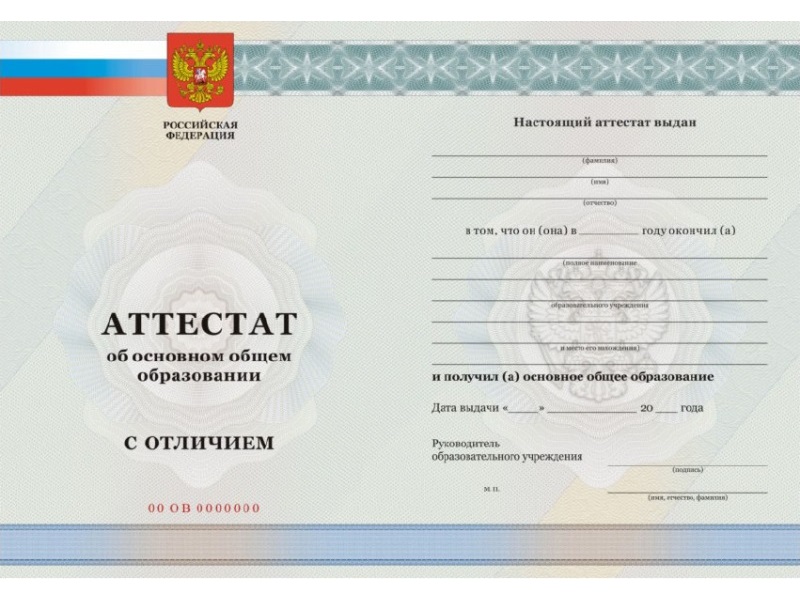
- All documents confirming your successful delivery of the GIA are drawn up accordingly. For these documents, the Ministry of Education and Science of the Russian Federation establishes the form of filling, appearance, parameters, method of accounting and delivery. In case of loss, re-issuance is provided.
Upon receipt of a general education, documents confirming your academic success may have options.
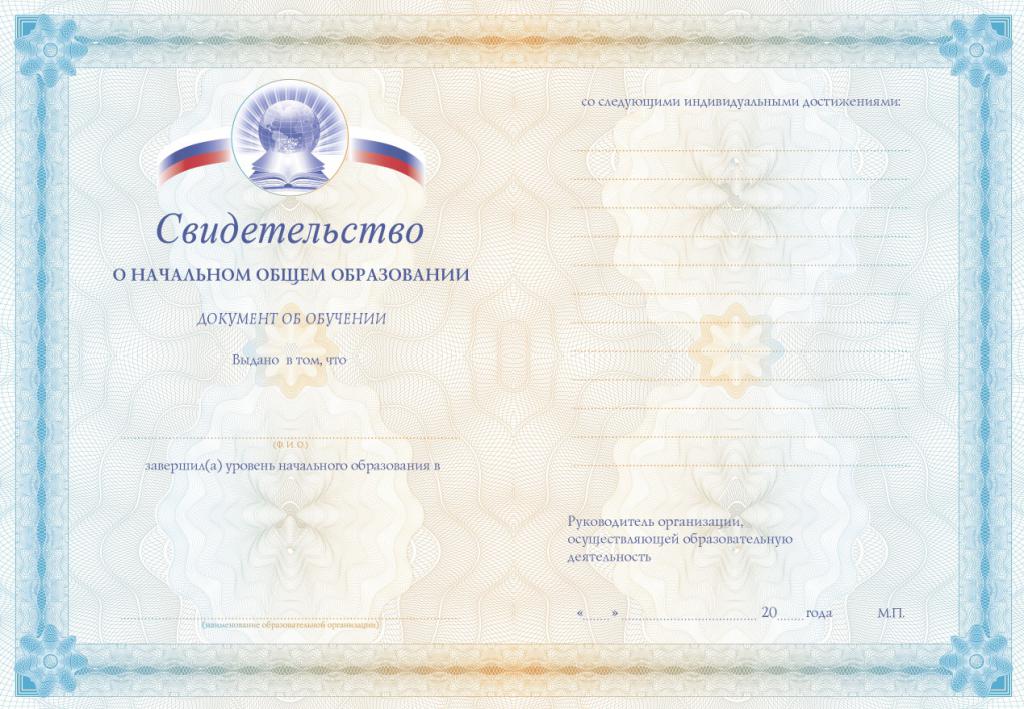
- Suppose you did not pass the GIA or the Unified State Examination, and the number of missed classes you have significantly exceeds the permissible level, and you did not provide a supporting document, for example, a medical certificate. In this case, you will be given a document proving that you were present at the educational institution, but did not cope with the training tasks. As you know, it will be difficult for you to enter any higher educational institution.
- The procedure for issuing documents in the education system is provided for students with disabilities, including those with underdeveloped brain functions. Such students receive adapted education in specialized educational institutions. At the end of these institutions, students are issued a document confirming the receipt of special education.
- The next step is obtaining a certificate of general secondary education. In the best case, handing you a certificate of general secondary education of a special sample: when awarded a gold or silver medal.
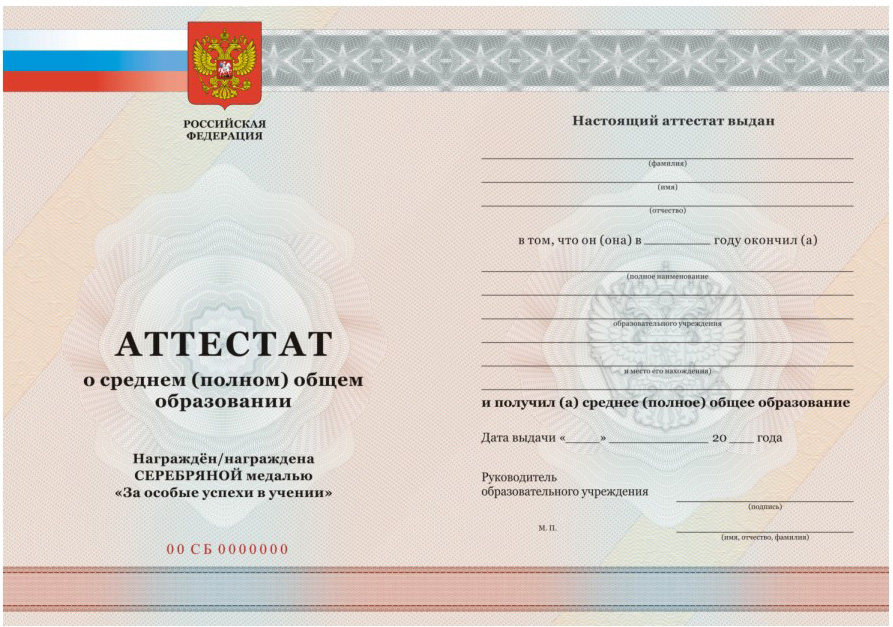
In this case, many roads open for you, and the choice is yours.
student life
Continuing the list of basic documents of education, we will move on to secondary specialized and higher education.
If the priority for you is to get a professional education, then you have to choose an educational institution that has established itself well enough taking into account the quality of the educational services provided, the conditions of study and accommodation for nonresident students. Today it is not difficult to read reviews of any educational institution in numerous forums on social networks. Let's start in order.
- Option 1. After completing school and passing the GIA, you can really assess your abilities and think about the issue of getting a vocational education. Accordingly, the receipt of this education will be confirmed by a diploma of vocational education or, much more pleasantly, a diploma of vocational education with honors. With the high demand of various industrial enterprises for graduates of technical schools, you will not have a shortage of offers with decent pay.
- Option 2. You have successfully passed the GIA or the Unified State Exam, but are not interested in getting a higher education at this time. You have decided to enter a technical college for secondary vocational education.Perhaps you expect after graduation to enter the university on preferential terms on the selected profile. It is reasonable. You will receive either just a diploma of secondary vocational education or a diploma of secondary vocational education with honors. And you decide how best to take this opportunity.
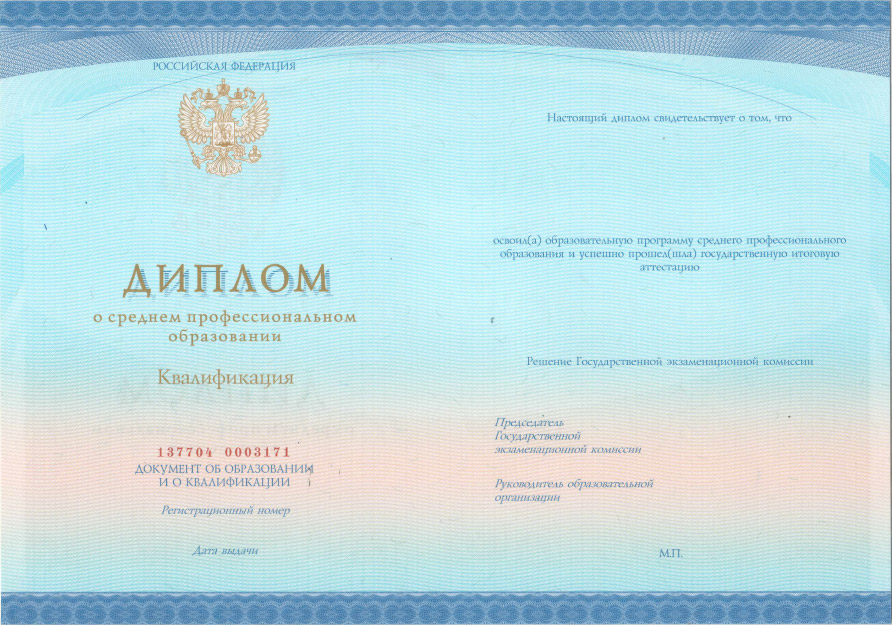
- Option 3. It is practically no different from those described in the second option. You can receive a diploma of secondary specialized education or a more promising diploma of secondary specialized education at the end of a secondary specialized educational institution with honors, through which the doors to higher education will open before you.
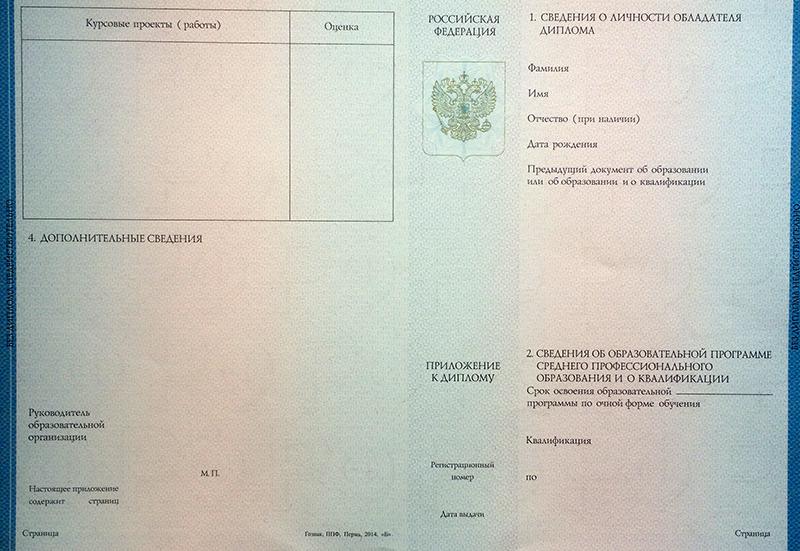
As you can see, if you are guided by the choice of an educational institution for long-term prospects, then you can quite successfully combine both the profession and the educational level.
high school
At present, it is not enough to get at least some kind of higher education. It is necessary to clearly understand: where you are going to realize your knowledge and skills, whether you are ready to work for quite a long time exactly in your chosen field, or you just threw away 5 or more years of your life. Given the need to constantly improve the level of existing knowledge and qualifications, it is necessary to carefully approach the choice of a business that can become a “lifespan”.
So, if you have chosen a direction, then you must remember that the preparatory period lasts at least 2 years. That is, if you could still relaxedly think about the available time reserve before passing the GIA, then you do not have to relax after the GIA and before the USE. And so the question of choosing a goal, you need to start asking yourself 2-3 years before the school graduation ball.
So, you passed the exam and submitted documents to several higher educational institutions. Then one of them remained, which will be practically your home for the next few years, given the necessary intensity of study.
At the end of a higher educational institution you receive a long-awaited diploma of higher education or, if you invested your time and energy in full, a diploma of higher education with honors. They have differences:
- if you have completed a bachelor's degree, then you will be awarded a bachelor's degree or a bachelor's degree with honors;
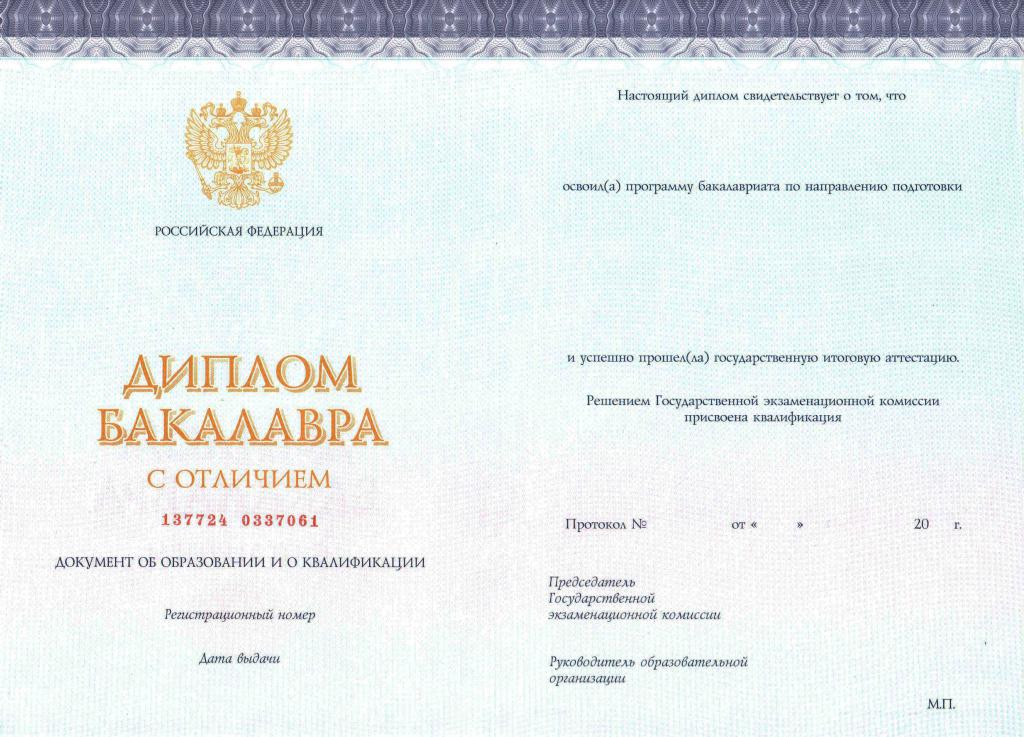
- if you decide to improve in your chosen direction at the specialty level and successfully complete your education (otherwise why do it), then you will have a specialist diploma or a specialist diploma with honors;
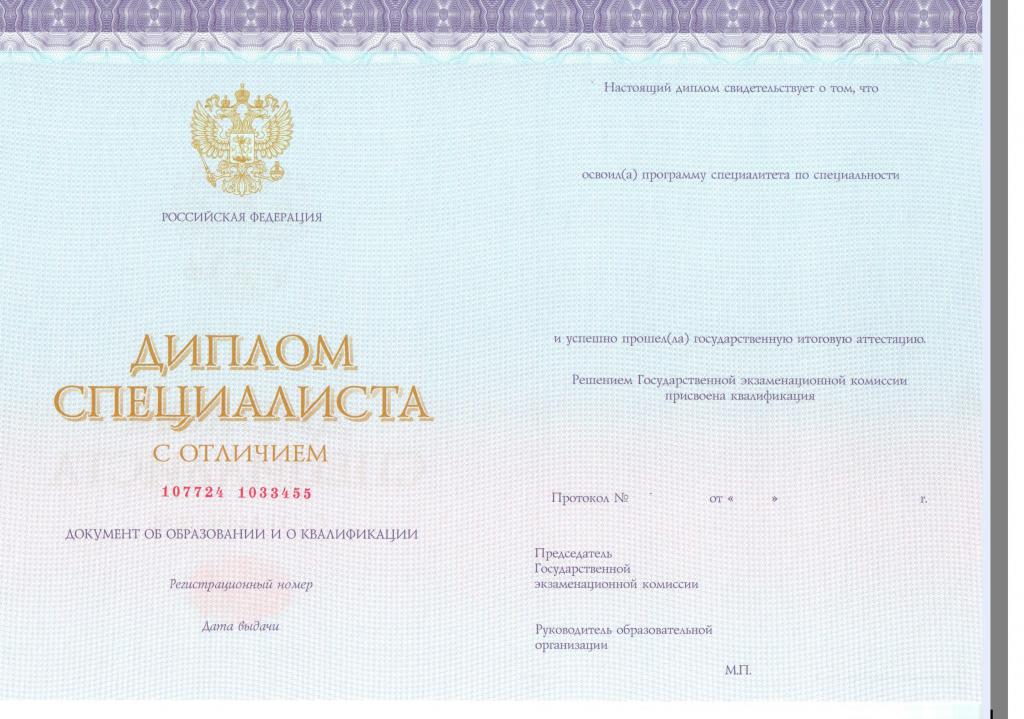
- if you are ambitious enough and you have big plans, then you will most likely continue to study at the magistracy and get a master’s diploma or a master’s diploma with honors.
Thus, if you have successfully passed the state exams, you will be issued the above documents confirming the level of your education and qualifications. The documents confirming the educational content in the form of diploma supplements contain the grades you received for exams and tests, as well as practical work.
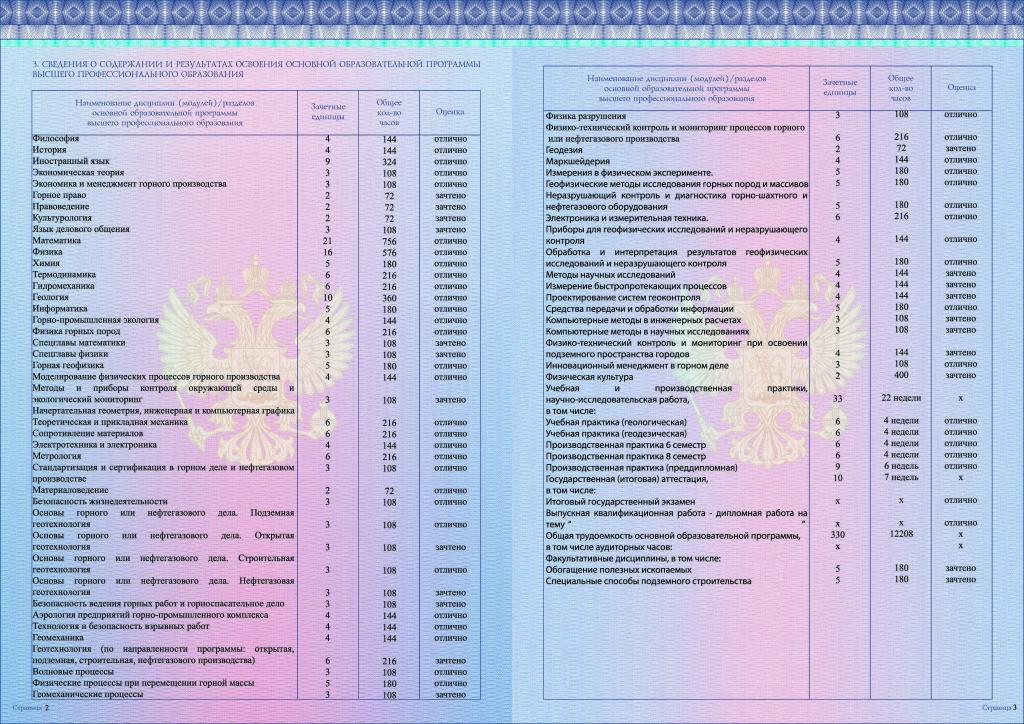
Another application contains the name of your completed coursework, as well as the name of the thesis. All this information is accompanied by your estimates on a five-point system.
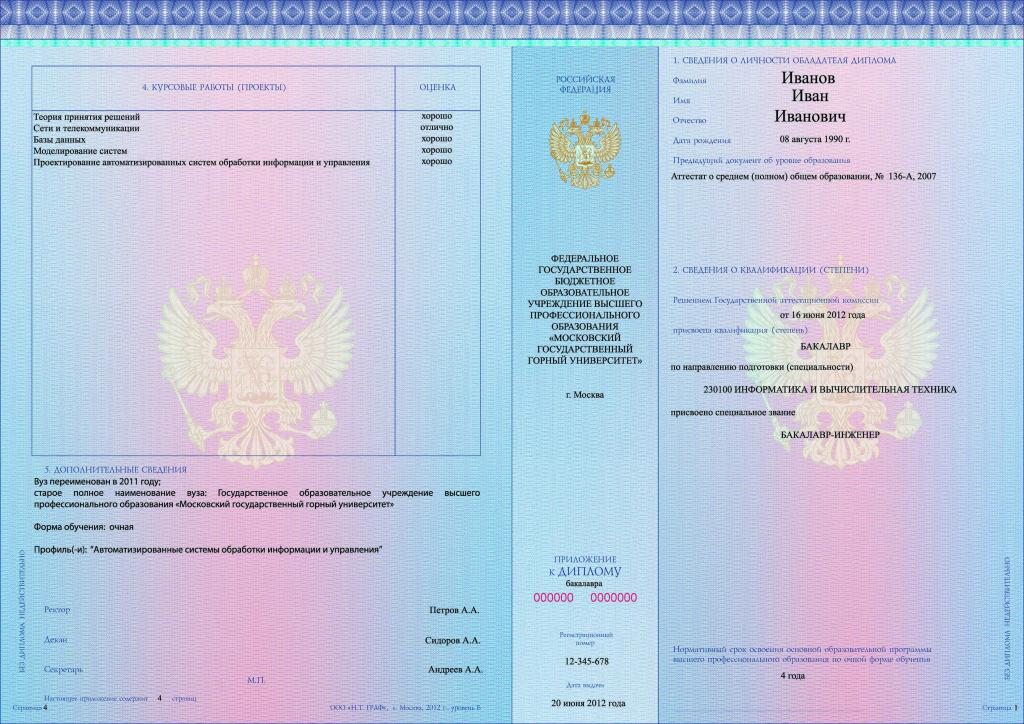
On the title page of the diploma of higher education you will see the qualifications assigned to you, as well as your personal data.
Persons who have successfully passed the state final certification are issued, unless otherwise provided by this Federal Law, documents on education and qualifications. Their samples (with the exception of samples of diplomas about completing residency or assistant internships) and their annexes, a description of the indicated documents and annexes, the procedure for filling out, recording and issuing the indicated documents and their duplicates are established by the federal executive body that exercises the functions of developing state policy and legal regulation in the field of education.
Special status is assigned to two higher educational institutions of the Russian Federation: Moscow State University named after M.V. Lomonosov University, as well as the University of the Northern Capital - St. Petersburg State University. These institutions have the right to create unique educational documents. Therefore, graduates of these universities can not be confused with any others.
More higher
The register of educational documents contains even higher levels of higher education. They relate to both the chosen focus of training and status.
- The choice of professional activities related to medicine involves improvement in the profession in residency, with subsequent confirmation of this in the diploma of graduation.
- Professional activities in the field of culture are confirmed in the process of assisting internships. The diploma of the end of this creative process will be called the diploma of the completion of the fellowship-internship.
- If you have chosen pedagogy or science as a matter of life, then you continue to study in graduate school with the subsequent issuance of a diploma of graduate school.
- Next on the list will be the defense of the candidate dissertation in the chosen direction, then - the defense of the doctoral dissertation with the assignment of titles, respectively, candidate of sciences and doctor of sciences. Confirmation of this status are diplomas indicating the degree and field of science in which the person has achieved such success.
It should be noted that a certain professional activity associated with high positions is possible only with the appropriate education. Of course, if the sphere of your interests is not in the highest state structures or the like, then all these efforts are completely superfluous.
